I’ve always dreamed of helping others communicate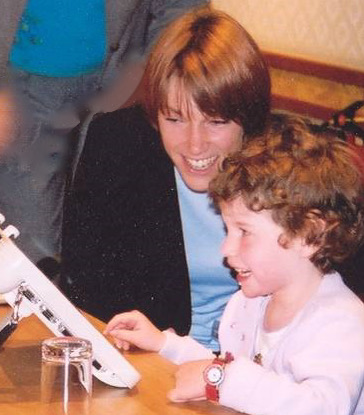
When I started school in 1998 I was provided with an electronic communication aid that was bigger than me. It was a profound moment to realise that everyone could understand me when I pressed the symbols on the screen. From that first day, aged 4, I wanted to grow up and be like my AAC consultant. My wish was to give other children like me a voice.
Communication is a fundamental human right, or need
I wasn’t old enough at 4 to understand communication rights. But the desire to empower others to share their views, opinions, needs, wants, and feelings with those around them has never waned. Having the confidence, right tools, and resources to communicate should mean being able to enjoy equal rights. And, if you are an equal you should be able to take part in every area of life, in the same way as the rest of society.
Learning to love AAC at home
I didn’t always use my communication aid much in the early years at school. Mainly because it was really difficult to learn the language needed alongside being in a mainstream classroom. Most early devices use symbols which is a conflict with learning literacy. My first device was also so big it was not easy to move around the classroom.
When I was 6 my mum insisted on my communication aid coming home from school every night. Because of this, it became something I learned mainly at weekends and in the holidays. Fortunately, by the time I left primary school technology had improved. I had a laptop and a much small communication aid that slipped inside Mum’s ‘kitchen sink’ handbag when we went out. I believe the support I received at home was, and still is, fundamental to me having become a proficient and successful communicator.
I’m a multi-modal communicator
I have some speech that is understandable to those who know me well, mainly in context. Out of context and with those people who don’t know me then I’m pretty unintelligible, so I use AAC. However, I supplement all my communication, like everyone else in lots of ways. This includes facial expression, eye movements, body language, and gestures. I’ve some of my own signs, and I will use whatever props are available to get my meaning across.
My low tech AAC resources
Alphabet boards
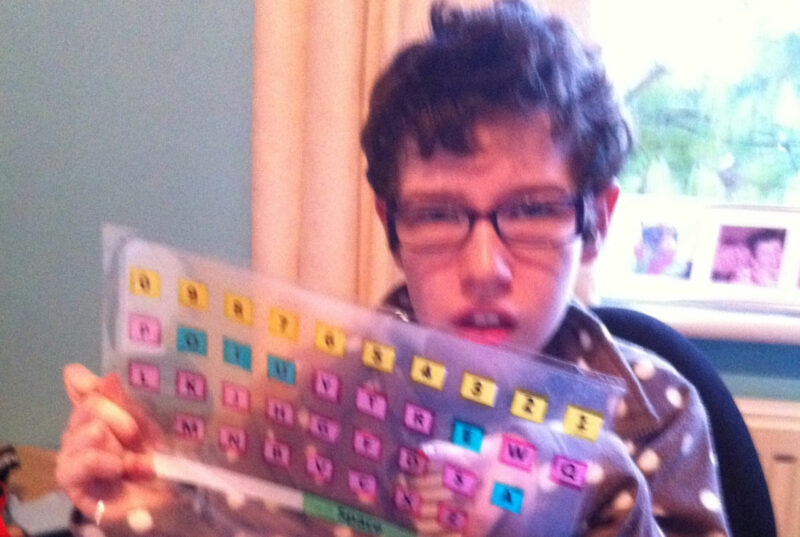 When school tried to sell me a communication passport it was to give me a low-tech resource in case my electronic communication aid broke down. Surprisingly until this point, I’d never had a low-tech AAC resource. Rather than seeing this as a positive I went out and created my own alphabet board for spontaneous conversation. This is a laminated clear sheet containing a qwerty layout keyboard, on my side it is the keyboard I have used every day since the age of 4, and on the other side the keyboard is reversed.
When school tried to sell me a communication passport it was to give me a low-tech resource in case my electronic communication aid broke down. Surprisingly until this point, I’d never had a low-tech AAC resource. Rather than seeing this as a positive I went out and created my own alphabet board for spontaneous conversation. This is a laminated clear sheet containing a qwerty layout keyboard, on my side it is the keyboard I have used every day since the age of 4, and on the other side the keyboard is reversed.
My communication partner holds the sheet and I point with my finger, they can clearly see where I am pointing. The added benefit is because they are sat opposite me I can lip read their responses and watch their facial expressions and body language. With my hearing, this is a win all round for my own ‘listening’ skills and interpretation. And, surprisingly I have discovered on a 1-1 basis spelling this way can sometimes be faster than using an electronic device.
Beth’s top tips card
As I said, everyone at my special school carried a communication passport which had basic information about communicating with them. This included their likes and dislikes and family names etc. Whilst I endorse this approach for those people who need it I really didn’t feel I did.
Instead, I created my own communication top tips card which I felt was more appropriate to my needs. The aim was to let someone who didn’t know me be informed about what I needed because I could easily tell them the rest.
This is a copy of my top tips card I created for school, as well as, and being out and about..
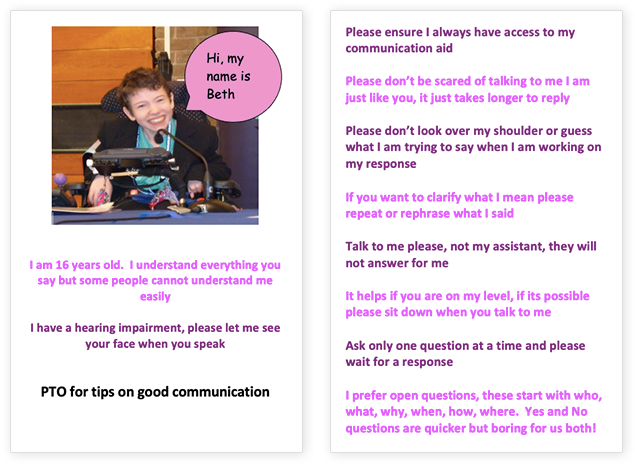
Beth’s business card
I’ve also carried a business card since I was 16. These are ideal for communicating with new people. It is another simple resource that explains my communication by utilizing the rear of the card.

6 x 60-second scoops: An AAC jargon buster
AAC is full of jargon, I’ve prepared 6 very short videos to explain the different types of AAC, who uses AAC and when, and why communication matters.
You might also find the following of interest:
AAC, video conferencing, and communication partners
Using AAC means being understood

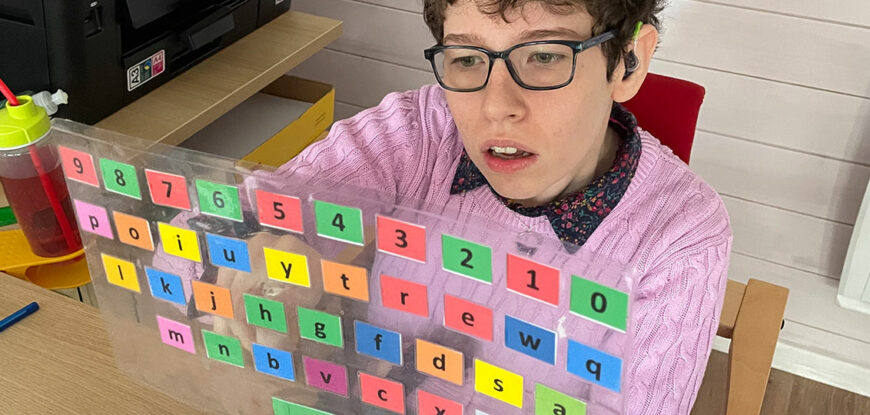
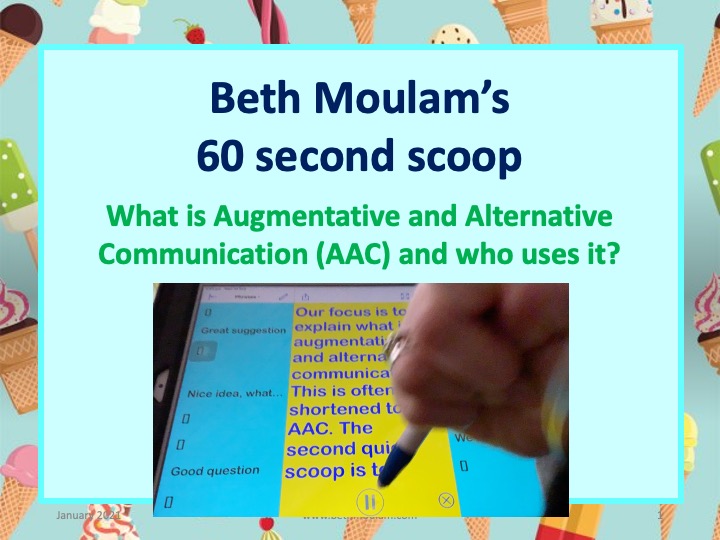
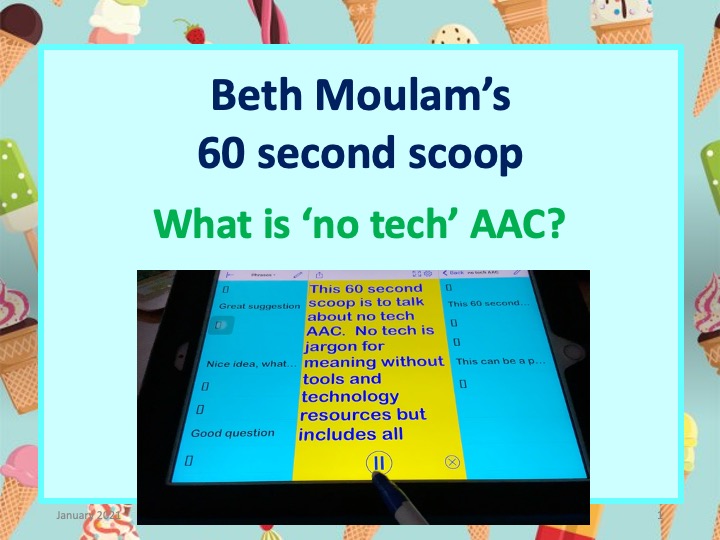
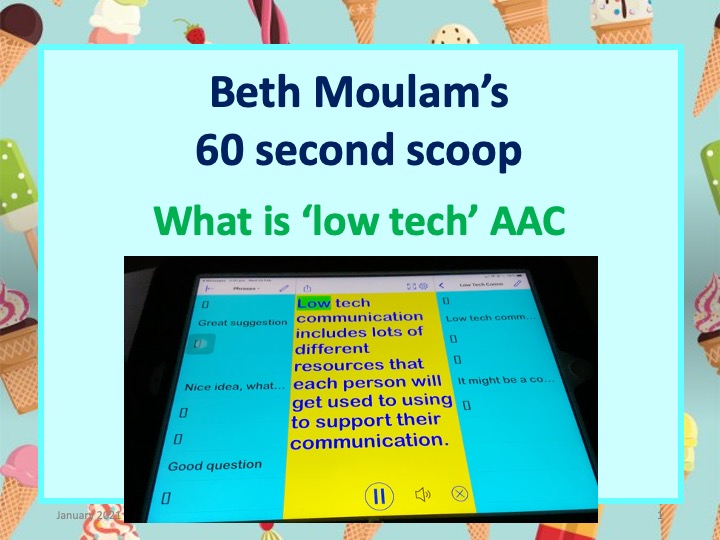
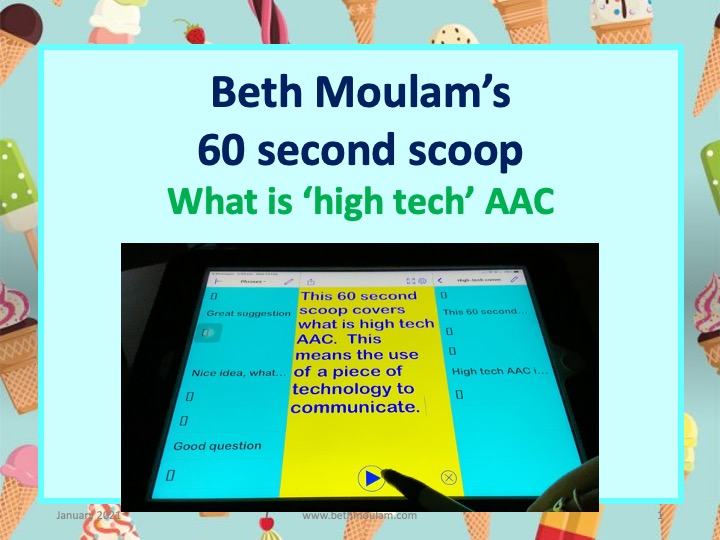
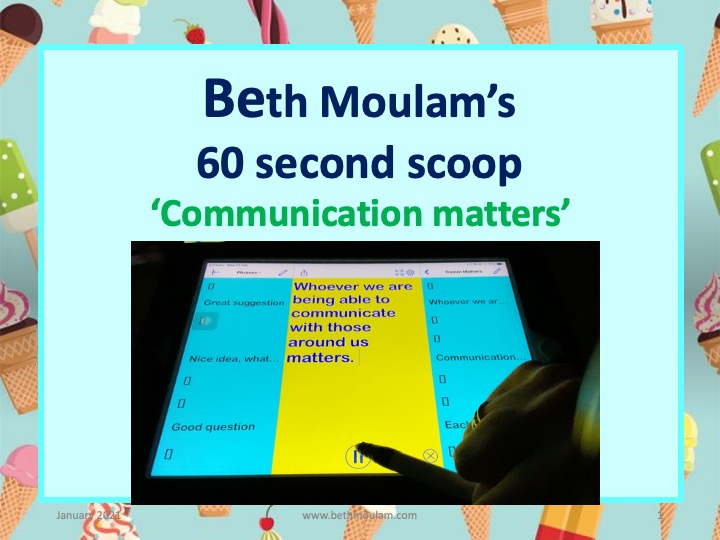
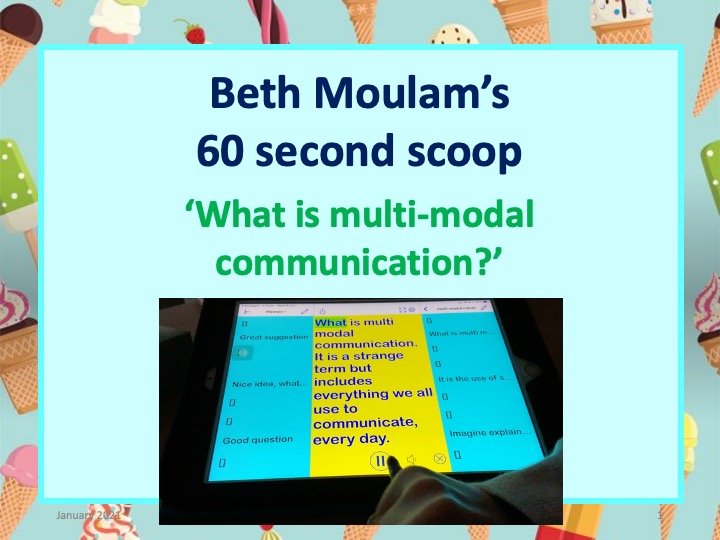
If you found this interesting or
helpful please feel free to share.